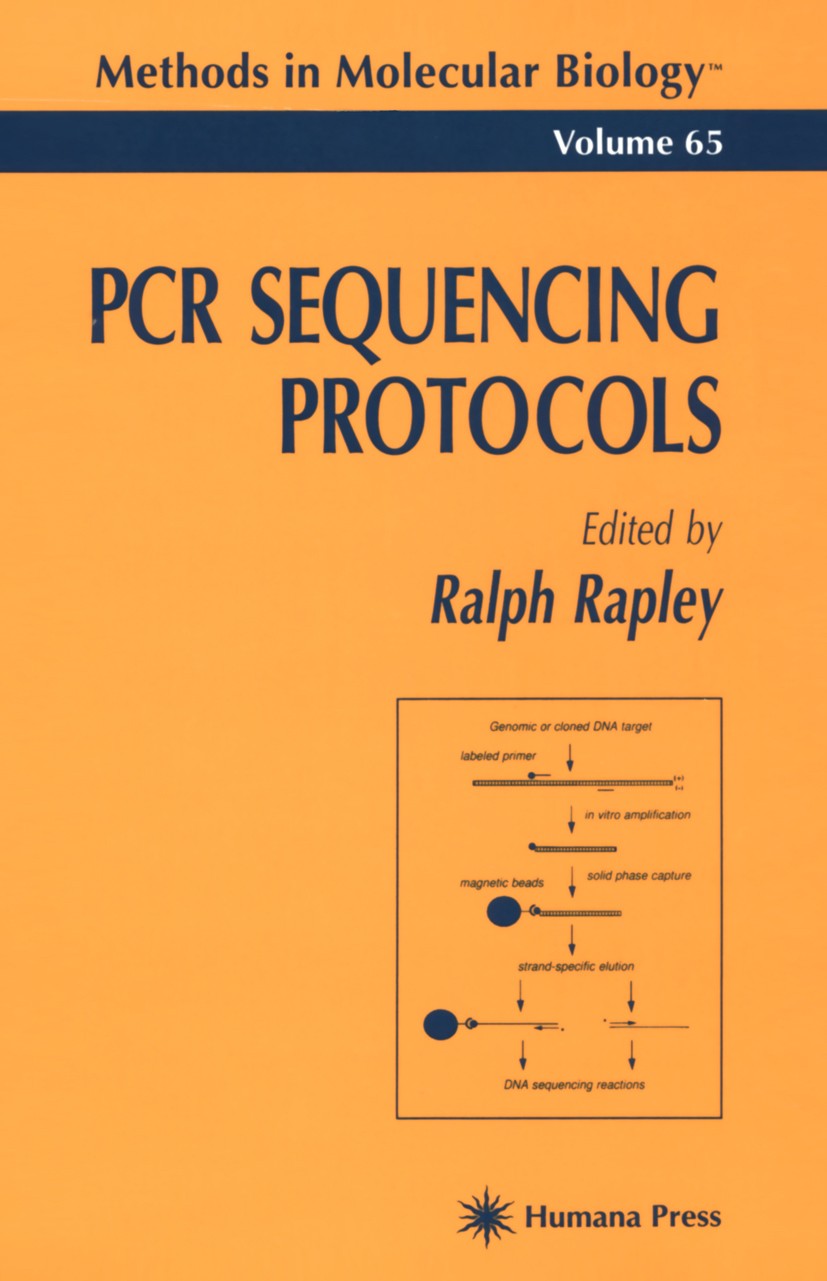| 書目名稱 | PCR Sequencing Protocols | | 編輯 | Ralph Rapley | | 視頻video | http://file.papertrans.cn/741/740073/740073.mp4 | | 叢書名稱 | Methods in Molecular Biology | | 圖書封面 |  | | 描述 | Advances in bioscience research usually arise as a result of the continu- ing refinement of existing technologies. However, there are a number of occa- sions v^rhere newly developed methodologies have a profound effect on nearly all areas of research. Frequently these are techniques that are elegantly simple in concept and require minimal technical manipulation. Two of these revolu- tionary techniques are the focus ofPCR Sequencing Protocols. The first such technique is enzymatic chain termination sequencing developed by Sanger and his co-workers in Cambridge and reported in 1977. This essentially brought the possibility of deriving nucleotide sequence information in a very short time scale and has been widely accepted in many laboratories as a routine molecular biological research tool. Furthermore, it has not only led to the sequencing of many genes and gene fragments, but has also allowed the tech- nical means of sequencing the human genome. The second technique that has found widespread acceptance in basic applied research and many routine applications is the polymerase chain reac- tion. This technique, first reported in 1985 by MuUis and his colleagues, pro- vides the means to | | 出版日期 | Book 1996 | | 版次 | 1 | | doi | https://doi.org/10.1385/0896033449 | | isbn_softcover | 978-1-4899-4038-4 | | isbn_ebook | 978-1-59259-551-8Series ISSN 1064-3745 Series E-ISSN 1940-6029 | | issn_series | 1064-3745 | | copyright | Springer Science+Business Media New York 1996 |
The information of publication is updating

|
|
 |Archiver|手機(jī)版|小黑屋|
派博傳思國(guó)際
( 京公網(wǎng)安備110108008328)
GMT+8, 2025-10-7 23:13
|Archiver|手機(jī)版|小黑屋|
派博傳思國(guó)際
( 京公網(wǎng)安備110108008328)
GMT+8, 2025-10-7 23:13


